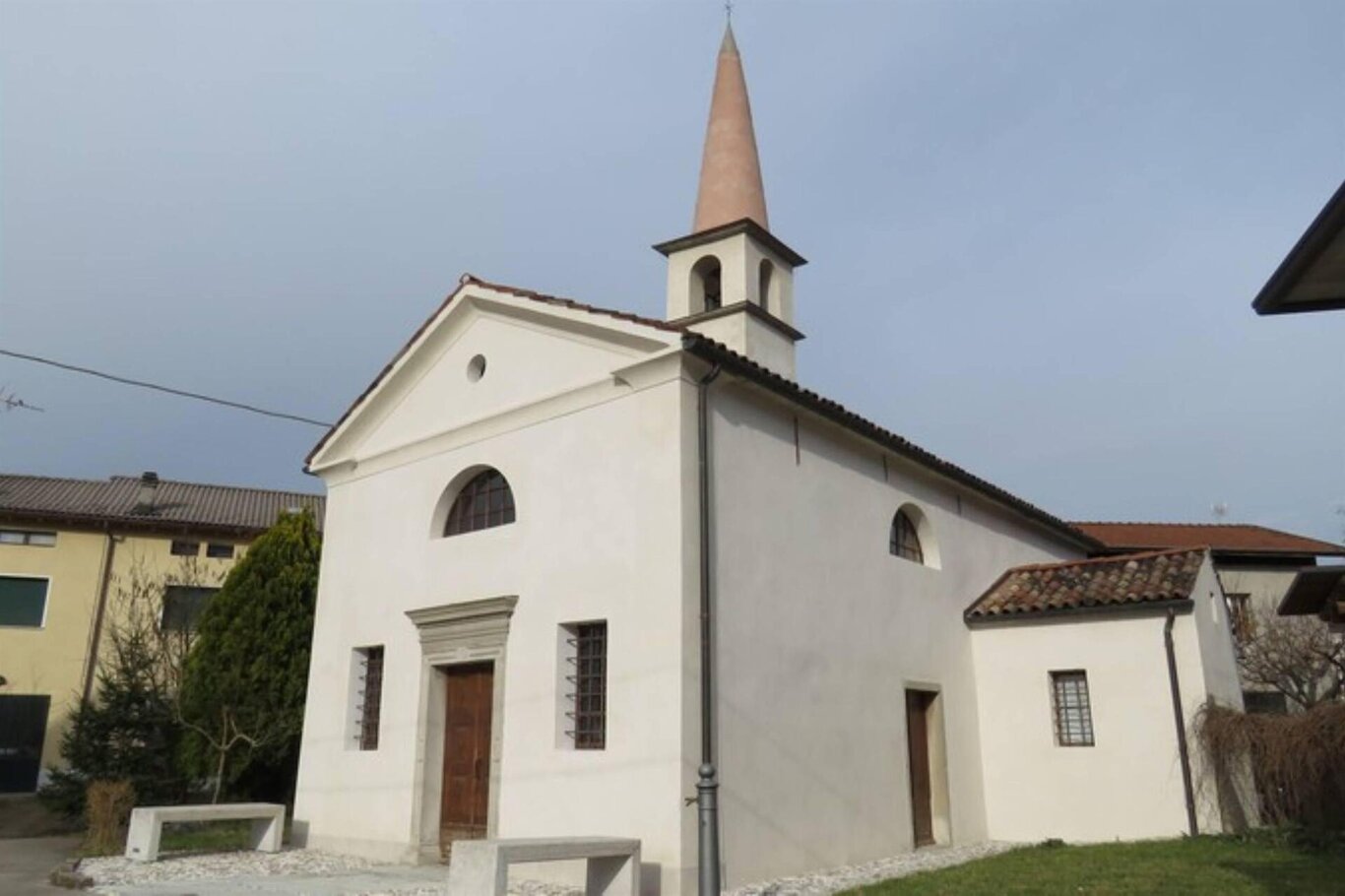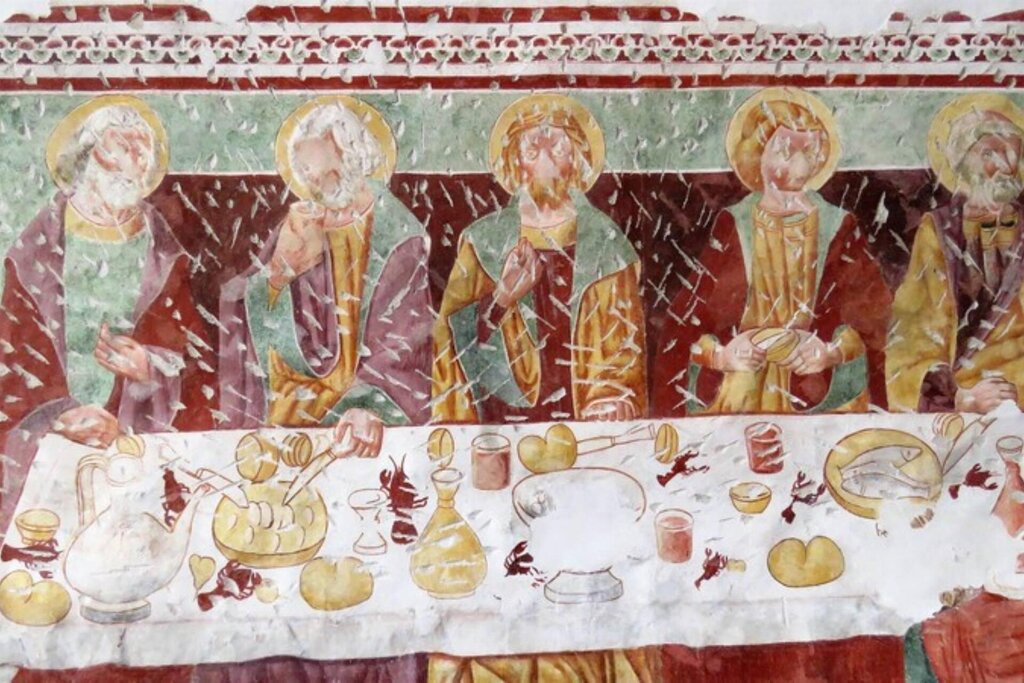In the "plain of the County of Cesana" stands the church of San Bartolomeo, one of the numerous small churches that embellish Valbelluna.
Of late medieval design, it is documented for the first time in 1515 but is surely older.
The church was enriched during the Seventeenth century with a bell tower, a sacristy, and a small cemetery enclosed by walls, while its more recent history is characterized by phases of abandonment and restorations carried out between the Seventies and Nineties of the twentieth century up to the global restoration of 2012.
The particularity of this church lies in the fact that it preserves on its walls traces of two well-defined pictorial phases, one from the fifteenth century and the other around 1540.
Among the fifteenth-century works, there is the Last Supper, by an unknown author, one of the best preserved with the distinct feature of the presence of red shrimp on the table, a decorative frieze that runs along the perimeter of the church and indicates the height of the previous ceiling, a fresco depicting Saint Bartolomeo with the knife signifying his martyrdom, and a donation box in stone.
From the sixteenth century is a Last Supper painted over the previous fifteenth-century one, detached in 1970 and now preserved in panels at the former Asilo di Lentiai, a series of frescoes depicting the story of Saint Bartolomeo, of which only some traces remain today, a decorative frieze visible only above the entrance door and in the right corner of the altar, and a Madonna with Child dated to 1581, which is very deteriorated.
In the center of the presbytery is a seventeenth-century wooden altar decorated with a painting depicting the Virgin with Child along with a leather altar front painted with St. Bartolomeo and, on the sides, two heraldic crests, one of Bishop Agazzi and the other of the Vergerio family, the latter traceable to the history of the County of Cesana.
The church is open and accessible during the event "Fragments of Art in Valbelluna", for celebrations and special occasions.



